The “Iron Lady” of Paris, the famous Eiffel Tower, has been breaking records of popularity for decades and has made a splash in the ratings of the most visited sights in Europe and around the world. One of the most photographed objects and a true symbol of Paris. For some tourists the Eiffel Tower turns out to be a complete disappointment, for others – a source of enthusiasm and inspiration. Impressions largely depend on how well you have prepared for the trip and organized a visit to the site, what time you have chosen, what information you are “armed” with. Such popular and crowded places like the Eiffel Tower require a special approach if you visit it on your own. In this article, we will tell you a lot of interesting things about this striking sight in Paris and share useful tips and practical information to make your visit to the Eiffel Tower as comfortable, pleasant and informative as possible for you.
The Eiffel Tower: The Story of France’s Iron Lady
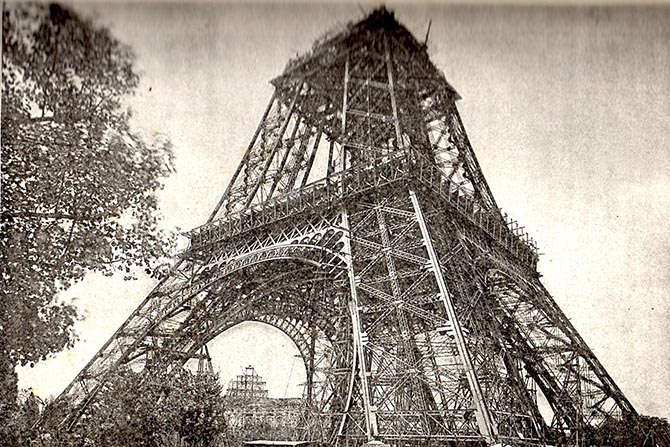
The design of the metal tower, developed by the Eiffel Bureau staff, had been waiting in the wings for several years. Until in 1886, for the World Exhibition in Paris (1889), a competition was announced for the project of a building that would demonstrate to the world the level of technical achievement of France. At the same time the construction was to be a gateway welcoming visitors to the exhibition pavilions with the exposition. Eiffel’s project was deemed the best. During a record-breaking two years and two months, 300 builders headed by Gustave Eiffel assembled the 300-meter tower from 18,000 steel billets weighing 7.3 tons. The material was lifted upward by cranes that moved along rails laid for the future elevators. This was one of the engineers’ know-how, which was evaluated by the competition commission.
But the appearance of the tower was clearly not in keeping with the image of Paris. Eiffel’s rather utilitarian design (four metal columns that meet at a height of about 190 meters, intertwined into one pyramidal tower) was taken to improve by the architect S. Sowestr. He designed the round-shaped top of the tower, in which the lighthouse was later installed. He supplemented the iron constructions with decorative elements and, most importantly, he created two platforms (at the height of about 58 and 116 meters), which were located on the arched vaults connecting all the columns in pairs. On the platforms were equipped with a weather station, viewing platforms, restaurants. There is also a third platform under the dome, where an observatory works, and where a physics room was once opened. The color in which the structure is regularly painted has varied from red and brown to the signature “Eiffel” bronze approved by the city authorities.
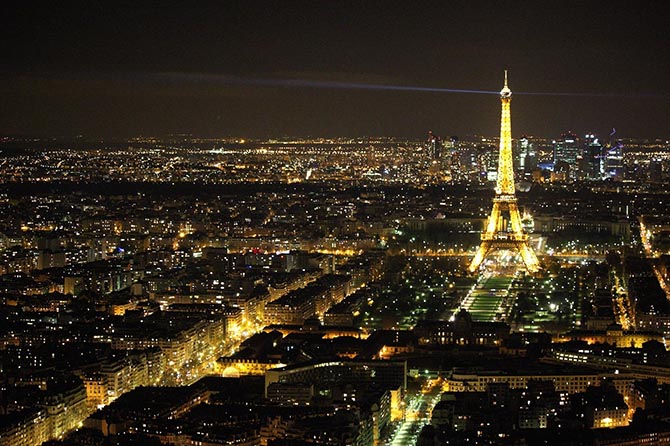
In March 2019, the “Iron Lady” will be 130 years old, and now no one would think of demolishing one of the main symbols of Paris. The tower was originally only supposed to stand for two decades, after which, according to Eiffel’s contract with the city, it was to be dismantled and relocated. Then the tower was saved from demolition by the fact that the project has already paid off during the World’s Fair. The military, communication workers and scientists helped: the frame of the tallest building in the world at that time was used for telegraph, radio, later television and mobile communication equipment. Even the Nazis, who captured Paris during World War II, did not have the guts to blow up the tower, although such an order from the Fuhrer existed.
130 years ago, the jury was not mistaken: the visitors to the World’s Fair appreciated the engineering and scientific-technical achievements of the French. A century ago, the structure was served by hydraulic elevators (which did not work at minus temperatures) and illuminated by gas lanterns. But even today, the “old girl” keeps up with the times: energy for maintenance of the structure is provided by solar panels (panels), and the collected rainwater is used twice. The tower is illuminated by millions of LED lights with a warm glow, an ice rink is poured on the lower platform in winter, and thousands of tourists travel up and down in high-speed elevators. Although La Tour Eiffel regularly makes curiosity rankings as “the tourist’s biggest disappointment,” the Iron Lady’s popularity with the public has not diminished at all since its opening.
Interesting facts about the Eiffel Tower
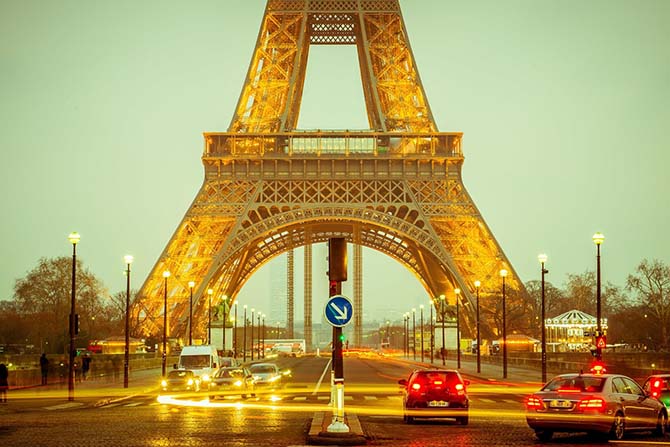
“Frenchwoman” with a German name
The creator of one of the main tourist sites in Paris was not French by birth at all, and the tower he designed bears the name of a German highlander. Alexander Gustave Eiffel from birth to 48 years of age bore the name of his German ancestors – Boeynickhausen. At the beginning of the 19th century the Boeunickhausens moved to France, and as a reminder of their homeland they took the surname Eiffel: to the south-west of Cologne there is a highland of the same name (German: Eifel). In 1832, the future engineer and architect was born into the family. Having received a diploma of the Central School of Arts and Manufactures, Eifel had a hand in the creation of bridges, railway stations in France, Spain, Portugal, Chile.
A hateful construction
Curiously, many of Eiffel’s contemporaries, especially members of the intelligentsia, met the new construction with fierce criticism. They believed that the tower ugly appearance of Paris and dreamed of its soonest demolition. We know of the “Letter 300” of cultural figures (including Dumas the son, the composer Charles Gounod), who demanded that the authorities not agree to build the “hateful column of iron and screws”. And the writer Guy de Maupassant often dined in the tower restaurant for the sole reason that it was the only place in Paris from which it could not be seen.
The Eiffel Tower and the weather
Officially the height of the structure is 324 meters (including the 24-meter antenna). However, everything is not so simple: in hot weather this figure increases by 10-15 cm. And in strong winds (from 30 m/s) the spire deflects to the side by about the same 10-15 cm – so great is the safety margin of the construction. The corrosion from humidity and rainfall is removed by timely repair: every 7 years, every inch is inspected, cleaned and coated with a fresh coat of paint.
The Eiffel Tower and the French
On the facade of the lower platform of La Tour Eiffel Gustave Eiffel immortalized the names of 72 compatriots: outstanding mathematicians, engineers, astronomers, naturalists. When the engraving hides under layers of paint, it is renewed. By the way, this list is strongly criticized by feminists, as there is not a single female name on it.
Eiffel’s secret dwelling
Another interesting fact about the Eiffel Tower: closer to the top of the tower, its creator arranged his own apartment – a spacious room with modest furnishings, where Gustave Eiffel liked to talk to scientists, engineers, outstanding minds of his time. Many ordinary French people also dreamed of going there.
The Eiffel Tower and swindlers
Swindlers managed to earn round sums on the fact that the Eiffel Tower was considered a temporary structure. So a desperate adventurer, gambler, expert in human psychology from Bohemia Victor Lustig, after reading an article that the tower needed repair or demolition, in 1925, forged documents and posed as a representative of the French authorities, authorized to resolve the issue. And he even managed to get a deposit from a metal businessman for his company to win the tender to dispose of the “iron lady.” He lived abroad for a while on the proceeds, but an attempt to repeat the gamble with another businessman ended with the latter going to the police.
The Eiffel Tower: practical information
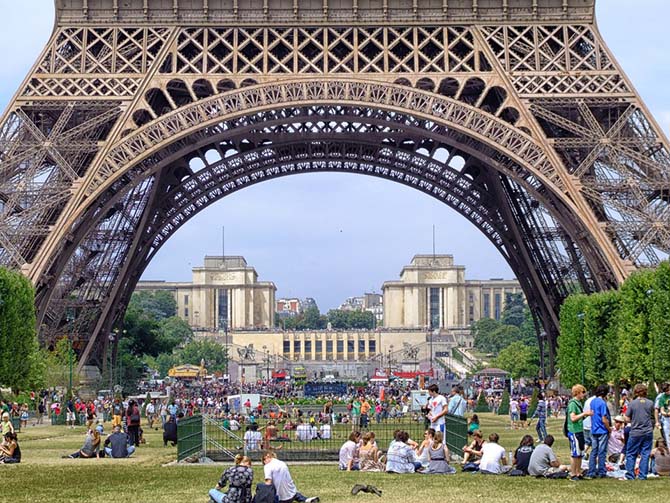
How to get there
The Eiffel Tower is located next to the Champ de Mars, on the site formed by the Quai Branly and Avenue Gustave Eiffel in the 7th arrondissement of Paris. The exact address is Champ de Mars, 5 Avenue Anatole France. There are 3 metro stations and a suburban train platform 500-700 meters away:
Ecole Militaire (line 8) is located near the square of the same name. From here you can reach the Eiffel Tower in 10-15 minutes by walking along the Champ de Mars towards the Seine.
Trocadero (line 6 and 9). The station is located on the opposite bank of the Seine. To get to the Eiffel Tower you have to walk through the Gardens of Trocadero and cross the bridge of Yen to the left bank, right at the foot of the “iron lady” on the Quai Branly.
Bir-Hakeim (line 6) is the subway station closest to the Eiffel Tower on the left bank. Walk northeast along Quai Branly for 5-7 minutes and you’re there.
The RER (commuter rail) station Champ de Mars-Tour Eiffel is located next door to the Bir-Hakeim subway station on the Branly quay.
When best to visit
If you plan to spend more than one day in Paris, it is better to choose clear weather to visit the Eiffel Tower. Many tourists agree that the ideal time to climb is an hour before sunset. In this case, you can enjoy Paris in the light of day and see the evening capital in the magnificent lights. When darkness falls to the famous golden illumination of the tower adds twinkling lights that delight tourists until 1 am.
How and where to buy tickets
Tickets are sold at 4 ticket booths at the foot of the Eiffel Tower – one booth on each side of the world. But to get to the ticket office you need to stand in a line, which is always present: it’s the most visited tower in the world!
You can also buy a ticket for the Eiffel Tower in advance online, on the official website. Remember, however, that you cannot return tickets bought online, even if the weather or circumstances prevent the ascent. In addition, you need to book tickets on the website several months before the trip.
It is also possible to get to the Eiffel Tower with a group as part of a tour that includes a visit to the landmark.
How to avoid the queue
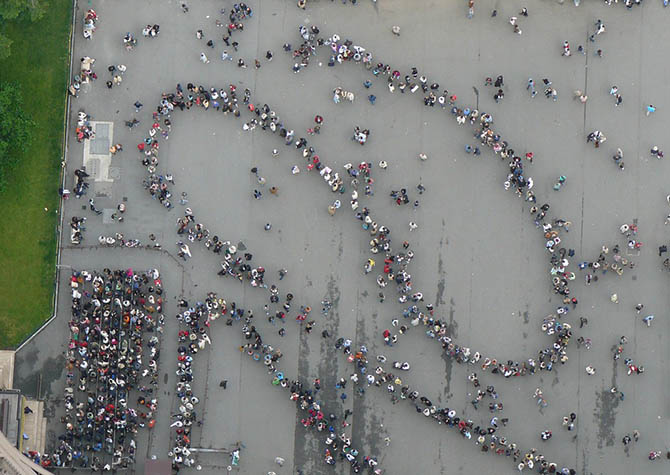
To visit one of the world’s most popular attractions, tourists stand in lines for hours. It is noticed that even in the early morning before the opening there is a long queue. The influx of tourists decreases in February and November. By the way, 10,000 visitors can be on the tower at one time. And serve the tourist site 300 people staff.
How to reduce the waiting time? In order not to waste precious time waiting in line at the ticket office, it is worth booking tickets in advance, on the official website. When booking online, you choose a specific date and time interval of visit (you can not be late, otherwise the ticket will be canceled). This avoids a general queue at the ticket office: tourists who bought tickets online pass through a separate entrance.
But even if you have a ticket, there will be another queue in front of the elevators (here you must present a printout of the reservation from the website). Due to the limited capacity of the elevators, crowding in front of the elevator is inevitable. So it is not possible to take the elevator without waiting at all even if you booked in advance.
There are special privileges for those visitors who book a table in one of the two restaurants of the Eiffel Tower. These establishments have their own elevators:
- “58 meters” is a democratic restaurant for family dinners and celebrations with a seasonal menu. It offers a panorama of the Seine waterfront and the Chaillot palace on Place Trocadero, illuminated by the setting sun.
- “Jules Verne” is an aristocratic place with a dress code for diners, classic French cuisine and interiors and an appropriate check size.
Table reservations are available on the venues’ websites.
Eiffel Tower: tips for tourists
- For the ascent, take warm clothes, as it can be windy and chilly at high altitude.
- But you don’t have to take a snack or a drink: there are several snack bars and bakery cafes on the platforms and at the base for those who like sweets, and the Champagne Bar on the top level is waiting for the most persistent, where you can celebrate your visit with a glass of sparkling wine.
- The range of view from the upper tier on fine days is up to 70 km. In foggy weather it is better to visit the first and second level, because the visibility from the third level is not the best.
- Tickets must be booked online several months in advance: the number of online tickets is limited.
- On the second level there are ticket vending machines for elevators. If you, once in the tower, decide to go higher, you can pay for the elevator to the third level with a bank card in such a machine.
- A visit to the Eiffel Tower on your own can bring many interesting emotions. But it’s not enough just to see it – you need to learn about its history and amazing features! It’s better not to do it with a paper guide, but with an atmospheric, captivating story and a view to brighten up the wait in line for the chair elevator. Recall that such a story awaits you in our audio guide to Paris. The Eiffel Tower is part of the “Paris Parade” audio tour.
Around the Eiffel Tower: What to see nearby
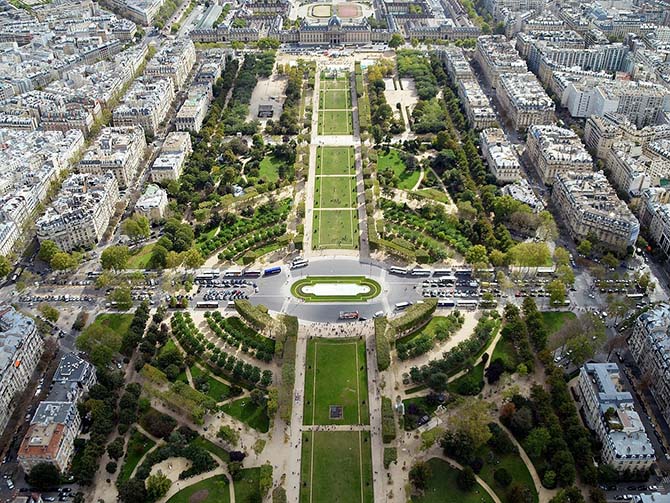
To the east of the Eiffel Tower stretches the Champ de Mars Park, which at various times was used as a parade ground for cadet school students, as a racing arena, and as a field for experiments in aeronautics. Since the 60s of the XIX century the park became the venue for World’s Fairs. In the XXI century there was built a modern monument – the Peace Wall of glass and metal.
Behind the Champ de Mars is a complex of buildings of the Military School, which trained officers for the French army. Here the sons of impoverished aristocrats studied. And in 1785 it was from here that the future Emperor Napoleon Bonaparte graduated! Now the buildings house military research institutes and the General Staff Officers’ School.
Not far from here, behind the bridge of Jena, is the Trocadero square with its famous gardens and the Chaillot palace. In the palace operates the National Theater (on its stage, by the way, once played V. Vysotsky as part of the Taganka troupe during a tour of France) and several museums: Museum of the architectural heritage of France, the Museum of Man (ethnological) and the National Maritime Museum. The Trocadero neighborhood’s mansions and the Gardens, which extend to the banks of the Seine and feature the largest fountains in the capital, are no less interesting.
When it comes to bridges, the one to the northeast of Yen is especially noteworthy. It’s the famous Alexander III bridge. It was named after the Russian emperor to commemorate the political alliance between the two countries. The bureau of Gustave Eiffel was also involved in the creation of the structure. Perhaps one of the most beautiful bridges over the Seine, its broad pedestrian zone allows to enjoy the magnificent decorations.
The Alexander III Bridge is adjacent to the Casa des Invalides. The palace complex in classicist style with 350 years of history was set aside for veterans of wars. There is a Military Museum (Museum of the Army) and the Necropolis, where Napoleon Bonaparte and the French marshals are buried.
In the immediate vicinity of the Invalides’ House is the Rodin Museum, one of the largest in the world dedicated to this sculptor. It is located in an old mansion of the beginning of the 18th century.
And nearby, on the Quai d’Orsay, stands the famous Museum of Impressionist and Post-Impressionist Art. It is equipped in the building of the former train station and keeps works dating from the middle of the 19th to the beginning of the 20th century. Among the masterpieces of the Musée d’Orsay are works by Vincent Van Gogh, Claude Monet, Edgar Degas and other painters of this period.
